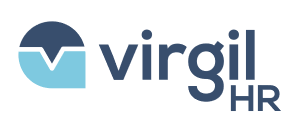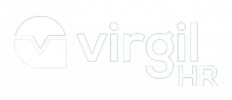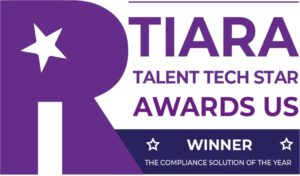Many HR professionals understand the crucial nature of compliance. Ensuring that your policies and practices meet regulatory requirements is essential for keeping the company in good standing, avoiding fines and penalties, and building trust with your employees and the general public.
Mid-year HR compliance audits can serve as an important checkpoint. It’s a chance to prepare for regulatory changes and ensure that leave policies, employee classifications, compensation, record-keeping practices, anti-discrimination policies, and safety protocols are in line with laws and best practices. Here are seven critical areas to help your team make the most of this opportunity to reduce risk and address potential issues.
Ensure Alignment With Regulatory Changes
All HR compliance audits should start with an understanding of the current legal landscape. This is especially important at the mid-year mark, as many new rules go into effect in July. Consider focusing on areas such as paid leave, pay transparency, minimum wage, anti-discrimination policies, and remote work practices, as these topics seem to be the focus for many legislatures.
As you gear up for regulatory changes, check for new requirements at all levels, including federal, state, and local. Then, seek expert guidance with tools such as VirgilHR on whether and how each law applies to your company. Scenario planning can help you see how the changes you make will impact your budget, operations, and culture.
Review Leave Policies
In an effort to ensure employee well-being, 18 states and Washington, D.C., currently have paid sick leave laws requiring employers to offer employees paid time off work to care for themselves or a loved one. Eligibility and requirements for these laws vary by state, with some requiring employers to use specific accrual schedules and provide transparency around how much sick time an employee has.
There are also important federal laws covering benefits like family leave, including the Family and Medical Leave Act. Consider using your mid-year HR compliance audits to ensure your leave policies align with leave laws. Additionally, make sure all employees know about their entitlements and benefits and have signed documents confirming their awareness.
Check Employee Classifications and Labor Law Compliance
In 2024, the U.S. Department of Labor proposed a rule that would require employers to use a six-factor “economic realities” test when determining whether a worker can be classified as an independent contractor or an employee.
Though the rule is currently in litigation, it’s still a good idea to double-check your employee classifications (including exempt and non-exempt) and consider how they may need to change.
You may also want to review overtime policies and minimum wage requirements to ensure compliance with federal and state laws. Look for pay or overtime discrepancies that need to be addressed, as these errors can lead to hefty penalties with both the Department of Labor and the Internal Revenue Service.
Work on EEOC-Related Policies
Recent executive orders have brought sweeping changes to the diversity, equity, and inclusion landscape. As a result, EEO-1 reporting will likely change, as the agency’s new instruction booklet signals a shift away from allowing companies to identify non-binary employees and instead requiring classification as either male or female.
As you collect gender identity and racial background information from your employees, make sure that your collection methods don’t violate any laws enforced by the Equal Employment Opportunity Commission.
This is also a good time to review your anti-discrimination and harassment policies and investigation procedures to ensure they reflect updated laws. Offer refreshment training to managers where necessary so that everyone operates according to the same standards.
Look at Record-Keeping Practices
Amid significant changes in U.S. immigration policy, it has become increasingly important for employers to keep work authorization forms and verification policies up to date. This offers a timely opportunity to conduct a review of all of your record-keeping practices, ensuring I-9 forms, performance reviews, and benefits documentation are organized and current.
Take note of all applicable record retention laws to ensure your documentation meets the requirements. Additionally, your mid-year HR compliance audits should include a review of data security protocols to verify that they meet the standards set forth by government agencies.
Update Safety Protocols
The Occupational Safety and Health Administration has issued several recent changes to its standards, including a final rule requiring properly fitting personal protection equipment for construction workers. The agency also announced increased penalties for serious, other-than-serious, and willful or repeated violations.
Don’t forget to review OSHA standards pertaining to your particular industry and update safety protocols accordingly. Ensure that your training program for new and existing employees reflects current regulations.
Consider Annual Training Programs
Some states, such as California, Connecticut, Delaware, Illinois, and New York, require employers to provide regular training on sexual harassment and discrimination in the workplace. Make sure that these programs are up to date, and implement a verification system to ensure employees have completed them.
Regular Audits Help Keep Your Company in Regulatory Compliance
With the rapid pace of regulatory change, compliance audits are more important now than ever. The good news is you don’t have to let your mid-year HR compliance audits overwhelm your team.
VirgilHR’s convenient, easy-to-use platform can provide you with legal updates to federal, state, and local laws to ensure that your policies align with them all. If you’re unsure of where to start, schedule a demo today and see how VirgilHR can help you gain peace of mind as you seek to reduce your compliance risk exposure.
Sources:
1. https://www.dol.gov/sites/dolgov/files/WB/StatePaidSickLeaveLaws.pdf
2. https://www.dol.gov/agencies/whd/fact-sheets/13-flsa-employment-relationship
3. https://www.osha.gov/news/newsreleases/osha-national-news-release/20241211 4. https://www.osha.gov/news/newsreleases/osha-trade-release/20250114






